Red Satin Congratulatory Silk Scroll with the Design of “The Gods of Good Fortune, Prosperity, and Longevity”

The Republic of China
Width: 117 cm, Length: 199 cm
The scroll, made of red satin, is for celebrating the birthday of the old people. It is embroidered with seven-colored silk, depicting the vivid expression of three gods.
In the middle of the embroidery is “Lu Star” (the God of Prosperity) who can bring about official posts for people. Wearing his winged official hat and a red officer robe embroidered with the design of dragons, cloud, the mountain symbolizing good fortune and the sea symbolizing longevity, he is holding a “ruyi” (literally means “as [you] wish”. It is a curved decorative object that is a ceremonial scepter in Chinese Buddhism or a talisman symbolizing power and good fortune in Chinese folklore). This god, with long beards, shows great gentleness and elegance

Lu Star (the God of Prosperity)
On the left of the embroidery is “Shou Star ” (the god of longevity), holding a clutch on the one hand and a “Peach of Immortality” (The peach is consumed by the immortals due to its mystic virtue of conferring longevity on all who eat them. Peaches symbolizing immortality or the wish for a long and healthy life are a common symbol in Chinese art). This god wears light yellow clothes with the design of the Chinese character “Shou”. With a large forehead, the white long beards, white hair and ruddy complexion, he looks very hearty and healthy in old age. The peach, the lingzhi mushroom tied to the clutch and the ornaments decorated around his waist are exquisitely embroidered. He is believed to control the life spans of mortals.
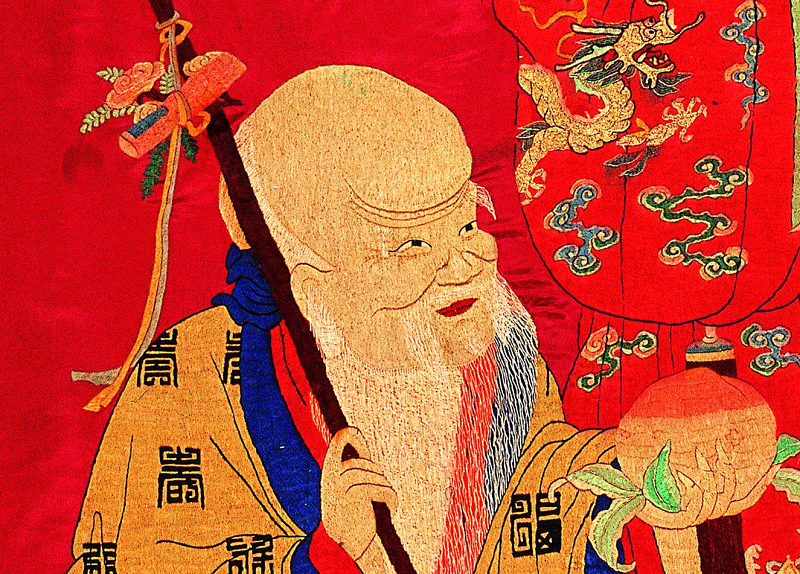
Shou Star (the God of Longevity)
On the right side of the embroidery is the “Fu Star” (god of good fortune), holding a magic charm drawing with the design of “Yin” and “Yang” Tai Chi. He wears green clothes, with the design of dragons and the Chinese character “Shou” at the upper side and the design of nets at the lower side. Around his waist is decorated with tassels. It is delicately embroidered

Fu Star (the God of Good Fortune)
The whole embroidery is well designed with great harmony and balance. Its rich colors, exquisite embroidery craftsmanship, vivid characters, and the long beard and hair as if flying in the wind are all very impressive
深入探索
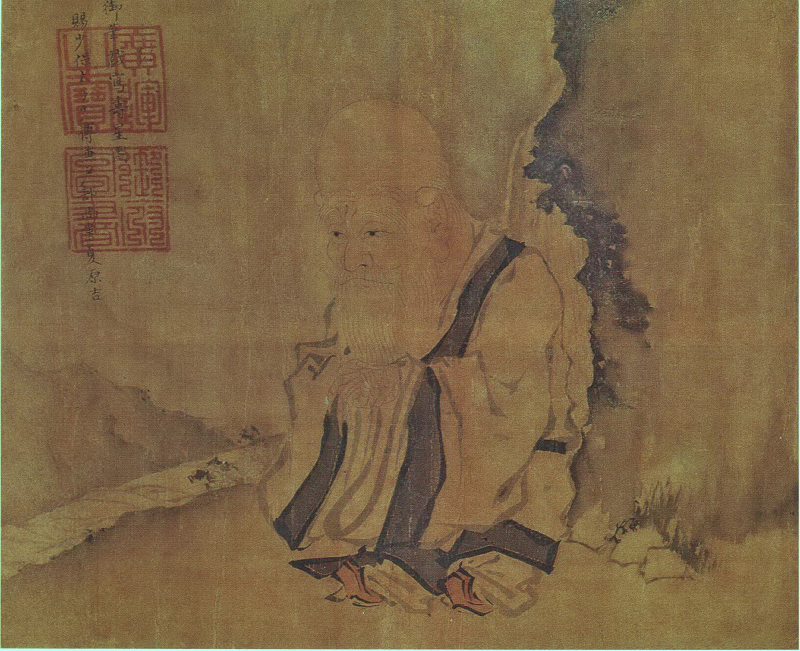
“The God of Longevity”, Ming Dynasty, by Zhu Zhanji, collected by the Palace Museum
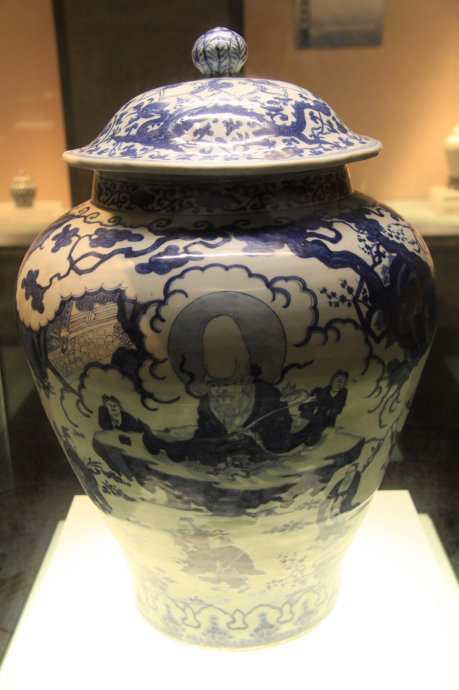
“Blue and White Jar with the Design of Celebrating Birthday by Immortals”, Ming Dynasty, collected by the Capital Museum
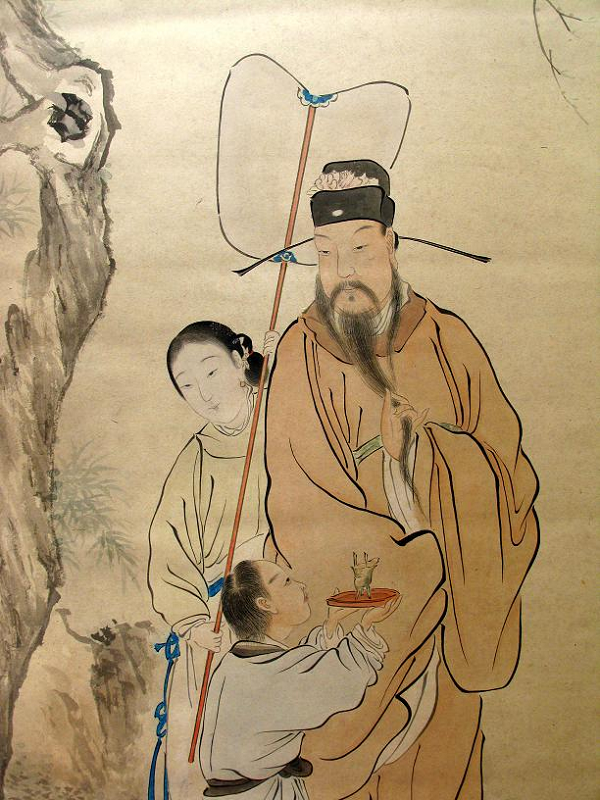
“The God Bringing about Good Fortune” Qing Dynasty, by Fei Danxu, collected by Huzhou Museum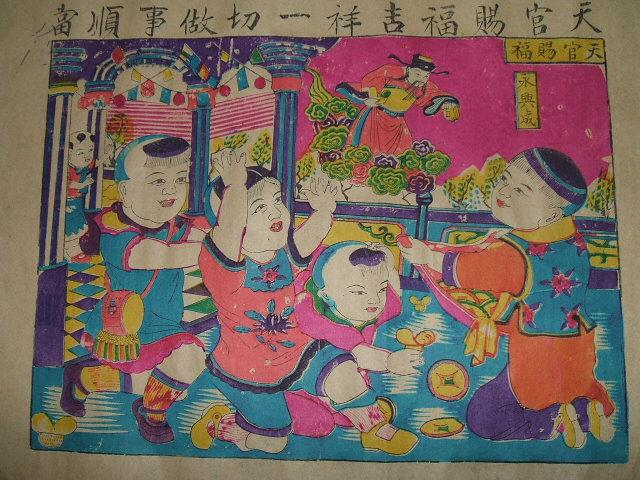
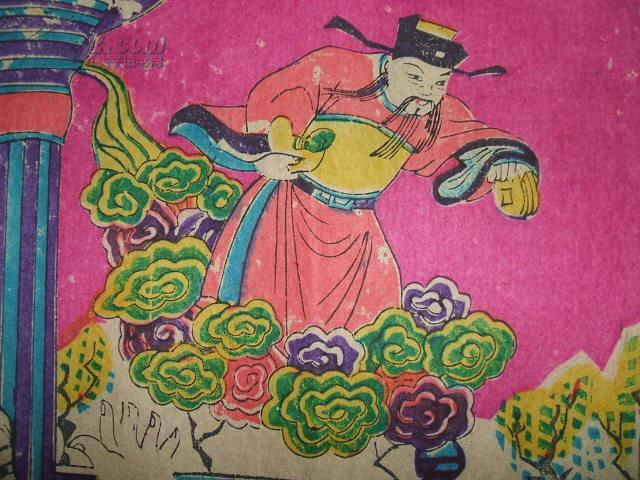
“The God Bringing about Good Fortune” Print for the Chinese Spring Festival , Qing Dynasty, by “Yong Xingcheng”, the detailed view.
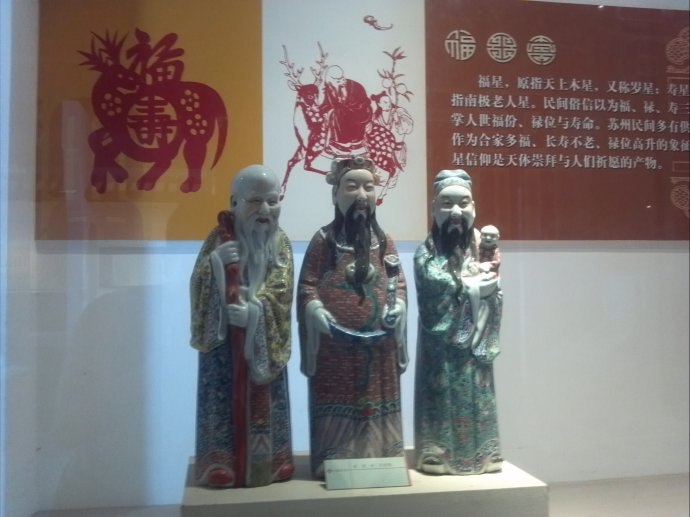
Porcelain statues of the Gods of Good Fortune, Prosperity and Longevity (the Lu Star, the god of prosperity is on the right side, holding a baby), collected by Suzhou Folk Art Museum
About Fu Lu Shou
Fu Lu Shou (simplified Chinese: 福禄寿) is the concept of Good Fortune (Fu), Prosperity (Lu), and Longevity (Shou). This Taoist concept is thought to date back to the Ming Dynasty when the Fu Star, Lu Star and Shou Star were considered to be personified deities of these attributes respectively. The term is commonly used in Chinese culture to denote the three attributes of a good life. Statues of these three gods are found in nearly every Chinese home and many Chinese-owned shops on small altars with a glass of water, an orange or other auspicious offerings, especially during Chinese New Year. Traditionally, they are arranged right to left (so Fu is on the right of the viewer, Lu in the middle, and Shou on the far left).



